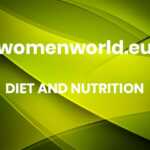Ah, October… The time of year when almost every tree is swathed in pink and the term “breast cancer” is in your timeline more often than a Kardashian. And while awareness is incredibly important – regular check-ups and a healthy lifestyle are key to combating cancer – a flurry of information also creates room for confusion.
In the world of science, it can take years of research and studies on large numbers of people to get a clear picture of what can and can’t increase or decrease your risk. That’s why you need to be extra careful where you get your information from. Here, we bust eight common myths and uncover the truth.
Myth#1: Younger women are becoming more and more susceptible.
Truth: The older you get, the more at risk you are for any cancer – not the other way round, says Dr Melissa Wallace, head of research at the Cancer Association of South Africa (CANSA). “The majority of breast cancer patients in South Africa and abroad have typically been and still are women between the ages of 50 and 70 years,” says Dr Justus Apffelstaedt, a specialist surgeon with a particular interest in breast, thyroid and parathyroid health management. So why older women? It’s not entirely clear, but research has shown that it may be a result of the accumulation of age-associated changes in a biochemical process that helps control genes.
Myth#2: Chemotherapy is the MVP of breast cancer treatments.
Truth: “The most effective way to treat breast cancer is with a multi-disciplinary approach, combining a number of treatment options that include surgery, radiation, chemotherapy and hormonal and biological agents,” says Apffelstaedt. The right treatment for you will depend on the type and stage of cancer and how far it has spread. “Treatment can consist of surgery, radiotherapy, chemotherapy, hormone therapy or biological or targeted therapies, which are new drugs that work differently to chemotherapy. A patient may have one of these treatments or a combination,” says Wallace.
Myth#3: If you’re a smoker, you’re automatically at risk for breast cancer.
Truth: Hate to break it to ya, but if you’re smoking, you’re at risk for around says Wallace. But that’s not the end of the story. “Many women will not necessarily increase the risk of getting breast cancer by smoking, but there is a subset of women with a specific genetic make-up that prevents them from detoxifying cancer-causing chemicals in cigarette smoke efficiently,” says Apffelstaedt. Those women do indeed have an increased risk of breast cancer when smoking. Places like 3×4 Clinics and DNAlysis can help you find out if you’re among them– but quitting is still a better option.
READ MORE: 11 Symptoms Of Breast Cancer In Women That Aren’t Lumps
Myth#4: Mammograms are painful.
Truth: It shouldn’t be painful, but a little discomfort is normal. Plus, knowing the state of your boobies should for sure outweigh any temporary unease.
Myth#5: Mammograms are not a big deal in breast cancer treatment.
Truth: Not all mammograms are created equal. When it comes to screening for BC, you want the best tech available, including an image produced by a mammogram specialist radiographer.
“High-quality breast imaging will detect about 95 percent of all breast cancers. In such centres, women whose breast cancer is detected at screening will have the same survival chances as women without breast cancer,” says Apffelstaedt.
Myth#6: It doesn’t make a difference where you’re treated.
Truth: “There can be a variation across facilities and provinces in terms of waiting periods for diagnosis and then waiting periods for accessing treatment,” says Wallace. The longer the waiting period, the worse the prognosis, since early treatment and detection are key. “In certain parts of the country, patients are experiencing unacceptable waiting periods to access treatment. CANSA is working hard to do what we can to address this at a national level,” she says. If you’re among those waiting, contact CANSA on [email protected].
READ MORE: My Experience With Breast Cancer, At Age 27
Myth #7: It’s best to remove the whole breast when you have breast cancer.
Truth: A tumour in the breast will not kill you. What will? The spread of cancer to the brain and lungs, says Apffelstaedt, Wallace agrees. “Whether or not the breast will be removed is entirely dependent on the type of breast cancer, the stage and how far it’s spread.” Plus, says Apffelstaedt, breast cancer often spreads to other areas early in the course of the disease, so a mastectomy won’t guarantee a better survival rate than breast-conserving therapy.
Myth #8: You’re more likely to get breast cancer after a breast augmentation.
Truth: “It may be hard for the doctor to see certain parts of your breast,” says Wallace. “The X-rays used in mammograms cannot go through silicone or saline implants well enough to show the breast tissue under them. This means that part of the breast tissue can be hard to see on a mammogram.” But studies show that women who undergo breast augmentation surgery and have breast implants are no more likely to develop breast cancer than women who don’t, says Apffelstaedt.



